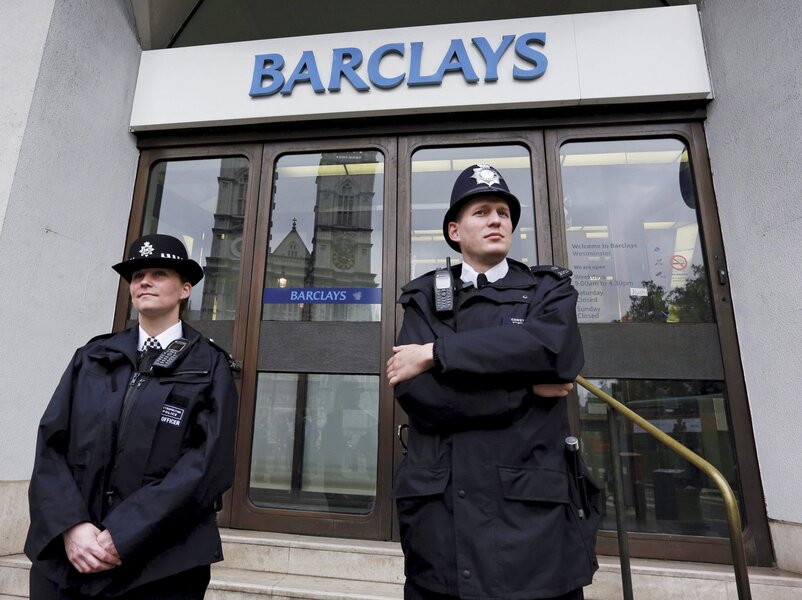Libor scandal: What is it and why you should care
Loading...
The latest banking fraud is centered in Britain, where the financial firm Barclays will pay half a billion dollars in fines for efforts to manipulate a benchmark interest rate. Other banks must have been involved, though, and the full range of the scandal has yet to emerge. Here's a quick look at what is known and why it matters.
What is Libor?
Libor stands for London Interbank Offered Rate. It's supposed to measure the average interest rate that banks charge when they lend to each other. Libor is also used as a foundation for other rates (such as the reset of adjustable rate mortgages) and a reference point for complex financial derivatives.
By one measure, some $300 trillion in loans or derivative contracts are pegged to Libor. That's 20 times the size of one year's economic output in the United States.
The Libor rates are determined by major banks. The banks report interest-rate estimates to the British Bankers Association, and the firm Thomson Reuters averages them to provide daily Libor numbers. The catch: The banks provide the numbers on an honor system. That's different from gathering data on observable transactions.
Who manipulated it, and how?
So far, Barclays is Exhibit A: Its chief executive officer has stepped down, and the firm will pay $453 million in fines to settle charges of Libor manipulation dating back as far as 2005. More banks will probably be implicated.
The US Commodity Futures Trading Commission, which charged Barclays and reached a June 27 settlement, stated that other banks were at least sometimes involved. Barclays traders "coordinated with and aided and abetted traders at other banks," the CFTC said, sometimes on days "when many derivatives contracts are settled or reset."
Two general types of manipulation have surfaced.
The first involved seeking to move Libor levels (up or down) to benefit a bank's own investment positions. The CFTC quoted e-mails between Barclays traders and colleagues responsible for reports that would influence Libor. A typical appeal: "We have another big fixing tom[orrow] and with the market move I was hoping we could set [certain] Libor as high as possible." A sample response: "Done ... for you big boy."
The second type: During the financial crisis, banks appear to have underreported Libor to try to appear financially stronger. Banks were scared to lend to each other, but a low Libor report could ease the aura of panic. According to Barclays employees, this occurred with an "everybody does it" attitude, and perhaps with regulators' consent.
With a dozen or more banks contributing data toward Libor, Barclays by itself could have only a small effect. How many other banks fudged Libor reports, and by how much? Three US banks participate in Libor panels: JPMorgan Chase, Bank of America, and Citigroup.
Why does it matter?
Some commentators say Libor manipulation doesn't matter much: Deviations from market-derived interest rates weren't generally very large, they say, and many consumers benefited in the form of lower interest on their debts.
But other financial experts call it an egregious fraud, in which banks profited at the expense of customers and financial-market integrity. For every homeowner who benefited from a fractional dip in mortgage rates, there may be an investor who was on the losing end of the manipulation (a pension fund, perhaps, or a factory that uses derivatives to hedge risks). The investment firm Charles Schwab is among those suing to collect damages from Libor-related banks.
What's next?
Lots of litigation for banks. Regulators also face scrutiny: Did they knowingly avert their gaze? Were they asleep at the switch? Eventually, the scandal is likely to result in reforming Libor or replacing it with benchmarks based on readily observable financial transactions.
The full scope of the scandal has yet to be seen. At the very least, it further erodes the public's already shaky trust in bankers.







